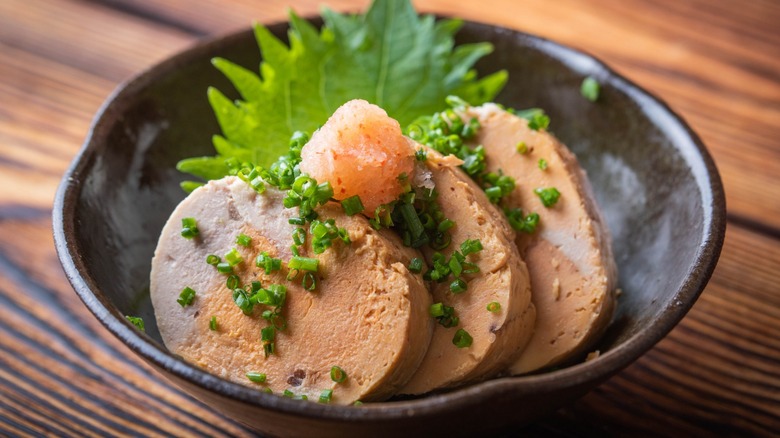The Risky Sea Ingredient Marcus Samuelsson Craves Constantly
The saying that risk equals rewards can apply to cooking as well as life. Chefs transform some of the most dangerous ingredients in the world into delicious cuisine, knowing well that if they miss a step in the process or fudge the execution, it's a matter of life and death. According to FoodBeast, the Giant Bullfrog is an African delicacy, but younger frogs are highly poisonous. The chef must select a frog that's mature enough, or else they risk causing critical illnesses or even death. The Silver Stripe Blaasop, a fish that's caught in the Indian Ocean, has poisonous skin, liver, and reproductive organs. Consuming any trace of those parts of the fish will result in muscle paralysis and breathing troubles.
Many people are familiar with the dangers of eating Fugu, or Japanese Puffer Fish, and chefs have to study for years to obtain a license to prepare it, per the Canadian Institute of Food Safety, Monkfish, on the other hand, is considered risky but is still widely available for eating. Celebrity chef and restaurateur Marcus Samuelsson credited a chef named Gabrielle Hamilton with making monkfish liver one of his favorite dishes in a YouTube video. If it's a fish you're not eating, maybe you should be.
Marcus Samuelsson makes impressive dish featuring monkfish livers
Marcus Hamilton gave the lowdown on cooking monkfish liver in a video recently, calling it "one of the riskiest ingredients you can work with." He said chef Gabrielle Hamilton gave him an appreciation for the dish. To prepare the livers, he added butter and oil to a pan. Once it was hot, Samuelson added in the monkfish livers and allowed them to carmelize. Then he placed them atop a piece of toast that was piled high with greens, and he chowed down.
Monkfish, which people often refer to as the "poor man's lobster," per A-Z Animals, is considered risky for a few reasons. In 2007, the FDA urged people to stop eating monkfish because of a mislabeling accident, in which two people became ill when they actually ate a toxic fish that was labeled incorrectly, according to CBS News. While monkfish is not actually toxic, it does contain what the National Resources Defense Council considers a moderate level of mercury, which means you shouldn't eat it more than six times a month.
Another reason you should think twice before eating monkfish is the destructive method employed to harvest them. Trawling the ocean floor rips up their habitats, depletes the species, and impacts other wildlife, per Citizen Sustainable.

